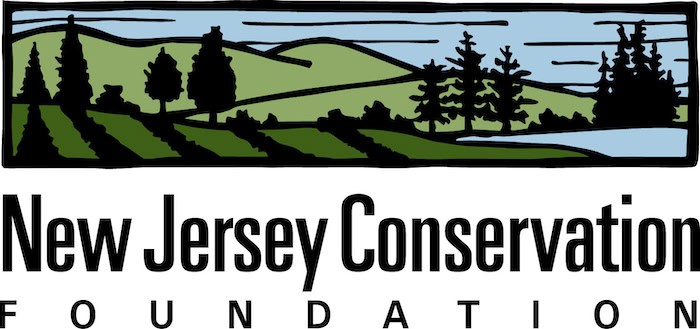By Jay Watson
With their helmet-shaped shells and spiky tails, horseshoe crabs are “living fossils” that look much the same today as they did 450 million years ago.
For countless millennia, horseshoe crabs living in the Delaware Bay have played a vital role in the life cycles of migrating shorebirds, which visit bayshore beaches each spring to feast on the eggs the horseshoe crabs lay in the sand.
The most fascinating of these shorebirds is the red knot, a sandpiper that can migrate 9,000-plus miles from the tip of Tierra Del Fuego in South America to the Arctic tundra in Canada.
Gorging on nutrient-rich horseshoe crab eggs along the Delaware bayshore allows the exhausted birds to quickly double their body weight and gain enough strength to complete their journey to nest and raise young in the north.
But horseshoe crabs are not so abundant these days and neither are red knots. In the 1990s, horseshoe crabs were over-harvested as bait, leading to dramatic drops in crab and red knot populations. Red knots are now listed as threatened under the federal Endangered Species Act.
Since 2008, New Jersey has tried to protect red knots by imposing a moratorium on harvesting horseshoe crabs for bait in state-controlled waters. However, they can still be taken for their blood, which contains a chemical used by the biomedical industry.
Although New Jersey bans the harvest of horseshoe crabs for bait within state-controlled waters (3 miles or less from the shoreline), there are no limits beyond the 3-mile mark.
As a result, trawlers from many nearby states capture horseshoe crabs off the New Jersey coast. Even on the Delaware side of Delaware Bay, fishermen can still legally harvest male horseshoe crabs as bait.
This already difficult situation for horseshoe crabs and red knots could potentially be made more perilous by a rule change proposed by the Atlantic States Marine Fisheries Commission (ASMFC), a regulatory body that recommends quotas along the Atlantic seaboard.
Technically, the ASMFC is proposing to switch to a new scientific model for assessing horseshoe crab populations, one it claims is more accurate.
But the proposal has created alarm among conservationists, who say the new model would eliminate a longstanding policy decision not allowing the harvesting of any female horseshoe crabs until the populations of both crabs and red knots return to higher levels.
“It’s a fundamental change to the framework,” explains Tim Dillingham, executive director of the American Littoral Society, a Sandy Hook-based nonprofit organization that works to protect marine environments. “They are updating the model, but they have taken the policy safeguards off.”
This could potentially allow the harvest of female crabs to resume.
According to Dillingham, the current ASMFC model recognizes that horseshoe crab eggs are essential to the survival of red knots and states that no harvesting of female horseshoe crabs will be allowed until the population of red knots rebounds to 81,000 and the population of horseshoe crabs reaches 12 million.
“Clearly, no one has seen 81,000 red knots on the Delaware Bay in a long time,” he said.
Indeed, the numbers are dismal.
In the 1980s, about 90,000 red knots were counted each spring along their Delaware bayshore stopover.
Horseshoe crab harvesting exploded in the 1990s, going from an annual harvest of 100,000 in 1991 to 2.5 million by 1998. Horseshoe crab populations crashed and, in turn, red knot numbers plummeted to about 13,000 birds in the mid-2000s.
After New Jersey’s moratorium went into effect, the situation seemed to slowly improve, with more than 30,000 red knots counted in 2018 and 2019. But the population dropped sharply again, with only 6,800 red knots counted in 2021 and 12,000 this year.
The reasons behind the recent low numbers are not fully understood, but to Dillingham they unequivocally point to a need to do everything possible to protect the birds.
“We know red knot numbers are so depleted that they are listed as threatened,” he said. “We don’t want to take any risks we can avoid. One way we can protect them is to not allow harvests of horseshoe crabs, because they provide the eggs the birds need.”
Female crabs need to be so abundant that they cover the beach and accidentally dig up other nests while depositing their own eggs. The eggs that are disturbed by successive waves of nesting female crabs float along the beach, becoming the food supply that powers the birds’ migration. It makes no biological sense to harvest female crabs until excessive crab eggs and birds return to their 1980s density.
The American Littoral Society and other conservation groups – including the New Jersey Audubon Society and Delaware Riverkeeper – are asking for the public’s help in convincing the ASMFC to keep its current policy protections for female horseshoe crabs.
“Now is the time for the public to reiterate that we don’t want to take any risks with the possible extinction of red knots,” Dillingham said. “Using horseshoe crabs for bait is just not worth it.”
Want to help protect red knots? The Atlantic States Marine Fisheries Commission is accepting public comments from now through Sept. 30. Comments should be emailed to [email protected], with “Horseshoe Crab Draft Addendum VIII” in the subject line.
To learn more about horseshoe crabs, go to the Horseshoe Crab Recovery Coalition website at https://hscrabrecovery.org or the American Littoral Society website at https://www.littoralsociety.org/horseshoe-crabs.html
To find out more about red knots, go to the Cornell Lab of Ornithology website at www.allaboutbirds.org/guide/red_knot
And for information about protecting New Jersey’s land and natural resources, visit the New Jersey Conservation Foundation website at www.njconservation.org or contact me at [email protected]
Jay Watson is a co-executive director of the New Jersey Conservation Foundation, Far Hills.

